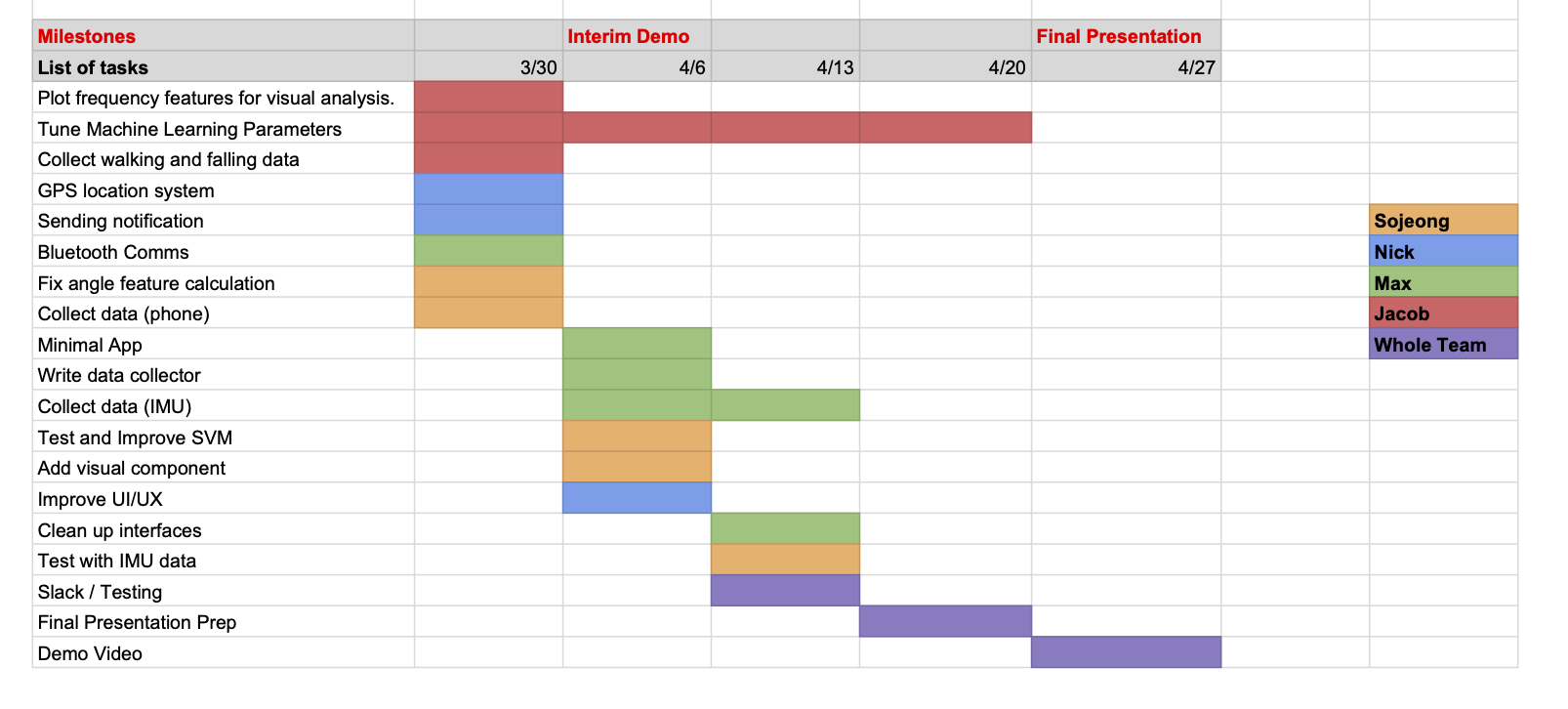To adjust to the COVID-19 situation, our team decided to make some adjustments to our initial project. The MVP for our project originally intended to detect falls in realtime on the raspberry PI by the project deadline. The new plan is to prove the concept due to the difficulty in developing remotely or for multiple devices. Instead, we will record acceleration data on the raspberry pi and perform the machine learning analysis on an external machine.
Because the Raspberry Pi is not classifying the falls in real time as originally intended in the old plan, the new plan is to demonstrate the ability for the raspberry pi to make a bluetooth call to a smartphone to alert contacts. By demonstrating the communication framework we designed between the Pi, smartphone, and emergency contacts as well as the machine learning framework we designed for fall detection intended to eventually run on the Raspberry Pi in real time, we will successfully prove a proof of concept for our fall detection device. We are also going to order another Raspberry Pi and the sensors to set up the entire hardware component so that Max can use it for the hardware system development and Nick can use the other for testing the Bluetooth communication between the mobile application and the hardware.
Also, we decided to develop the mobile application with React Native instead of using the Android Studio. As we are working on our project remotely, Nick, who is responsible for the development, has only access to the iPhone. Since the React Native supports both Android and iOS platforms at the same time, once the application is released, another team member who has either an Android phone or iPhone can download it for the integration of the system later.
For data collection, our original plan was to collect data from people with different weights and heights to ensure that the data does not differ depending on people’s size. However, this became hard due to remote work, so we decided to have one person do the data collection. We also ordered a gym mat and a dummy for data collection before spring break, and we shipped it to Jacob so that he can use them for collecting data. The fall detection algorithm can be developed as planned, except that it will run on a computer instead of running on a Raspberry Pi. Our stretch goal would be to integrate the software component with the pi.

